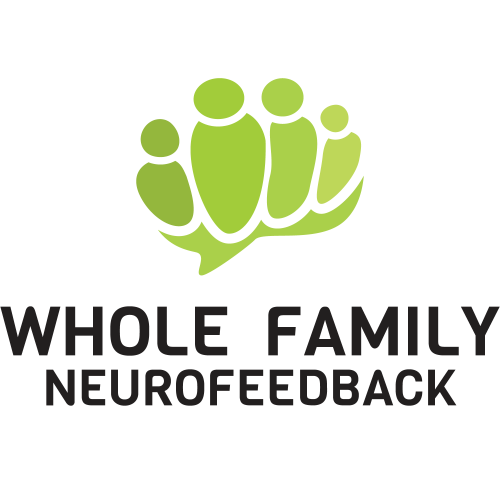Whether you’re new to learning about neurofeedback or you’ve been researching it and want to give it a try, you probably have a lingering question: Is neurofeedback safe and effective? This is a common question, so let’s explore this topic. We want you to have all the information you need to make the right decision about neurofeedback. In this article, you’ll learn about the two different types of neurofeedback, the safety of both types of neurofeedback, and how neurofeedback helped transform my family’s life.
Two Types of Neurofeedback
First, it’s important to know that there are two types of neurofeedback: linear and nonlinear. We’ll quickly go over each type and then answer your questions about their safety and efficacy.
Linear Neurofeedback
Linear neurofeedback was the original neurofeedback discovered over 50 years ago at UCLA. Sometimes it’s referred to as biofeedback for the brain. In biofeedback, you’re connected to electrical pads and sensors that help monitor bodily functions. A few examples are heart rate, breathing, and muscle response.
With this information, you can learn to do things such as:
- Manage your breathing
- Relax your muscles
- Manage stress by thinking more positive thoughts
Neurofeedback took this concept and applied it to the brain. Neurofeedback is simply getting information about your brain’s electrical activity and using this information to help self-regulate. Linear neurofeedback is a medical model and is done by a trained practitioner. Some practitioners start with a brain map and monitor your brain’s electrical activity to see what your typical brain activity is like. Some will simply start training once they understand your needs and goals. Once you discuss your goals, your practitioner will work to help shift your brain’s electrical activity to a desired state – based on statistical norms, their training, and their experience.
For example, the brain’s alpha waves are associated with calm and relaxation. So if you desire to be more calm and relaxed, the practitioner might want to increase (or uptrain) the alpha brain wave.
Since beta waves are associated with focus and attention, a practitioner may try to increase those waves if the goal is to get more focused. They may decrease (downtrain) if needed.
In linear neurofeedback, you train according to the practitioner’s protocols and what they think you need more or less of. Because of this, their experience, training, and intuition are very important for success.
Nonlinear Neurofeedback
Nonlinear neurofeedback is not a medical approach but a wellness model. This type of neurofeedback doesn’t tell your brain what it needs to do and it doesn’t push your brain toward any statistical norm.
Nonlinear neurofeedback works by detecting when your brain makes a sudden shift or experiences turbulence and allows for the brain to self-correct. A feedback loop in your brain already exists and your brain already self-corrects when needed. Nonlinear neurofeedback is just tapping into this ability, allowing your brain to do the work to find optimal functioning.
With non-linear neurofeedback, you attach sensors to your scalp and ears. Then, you sit back and listen to music or watch a movie. When the machine detects turbulence or a shift in the brain’s electrical activity there will be a pause in what you’re listening to. This will bring your brain back to the present moment.
Over time, this allows your brain to automatically shift toward optimal functioning. The best part of nonlinear neurofeedback is that it’s unique to the user. You’ll only get the feedback you need.
The only nonlinear neurofeedback on the market is called NeurOptimal® neurofeedback. It’s an advanced brain training system that anyone can use – no extensive training or brain mapping is required.
Is Neurofeedback Safe?
Of course, you want to know if neurofeedback is safe. Any questions or concerns about it are completely understandable and valid. Here are your answers to the most common questions about the safety and efficacy of both types of neurofeedback.
Is neurofeedback equipment safe to use?
Neurofeedback equipment is safe to use. For linear neurofeedback, the training, experience and skill of the practitioner is the most important thing. The equipment itself is safe but you’ll want to talk to different practitioners and make sure they are highly trained, qualified, and skilled to make the right decisions regarding the changes in protocols they make.
NeurOptimal® -or nonlinear neurofeedback -is safe, effective, and non-invasive. It’s important to note that the equipment is there to monitor the electrical activity of the brain and to give feedback or information so that your brain can self-correct.
There is no electrical activity going into the brain. There is no stimulation to the brain. When needed, your brain will get the signal of a brief pause in whatever you’re listening to. This will help the brain get back to the present moment, self-correct and move toward a more optimal state.
Are there side effects from neurofeedback?
It Depends:
With linear neurofeedback, it may be hard to know if the effects you’re feeling are side effects or therapeutic effects. Either way side effects are rare but could include:
- Headaches
- Hyperactivity
- Anger
- Sadness
- Feeling tired
If you are doing linear neurofeedback and you experience any of these, you’ll want to follow up with your practitioner and let them know.
Because NeurOptimal® nonlinear neurofeedback is natural, noninvasive, and isn’t trying to move your brain patterns toward any particular state, you’ll always experience therapeutic effects. There are no side effects.
As your brain organizes itself and moves towards a more optimal state, you may experience some new feelings and emotions coming to the surface. Learning to manage your emotions and work through feelings is a good thing. It will help you cope with whatever you’re going through and help you develop long-term coping skills.
Is neurofeedback safe for everyone?
Linear neurofeedback is considered a medical model so you may want to consult a healthcare provider – it’s up to you. Many practitioners already work in the medical and/or behavioral health industry but it can’t hurt to do a lot of research and ask trusted people about it.
NeurOptimal® is a wellness model and is designated by the FDA as a general wellness product. There is no stimulation, shocks, or anything going into your brain at all. It does not push your brain waves into any desired state. The system simply detects sudden changes and then pauses what you’re listening to. This pause stimulates a reflex that brings you back to the present moment. It’s considered safe for all ages from young children up to seniors.
Is neurofeedback effective?
Both linear and nonlinear neurofeedback are effective. If you do try linear neurofeedback, I cannot stress enough the importance of the practitioner. It’s safe and effective but the skills, training, intuition, and experience of the practitioner are crucial to having a good experience.
With nonlinear neurofeedback, there is no practitioner and the system is so advanced, it does everything for you. You can buy or rent equipment and learn to do it yourself in the comfort of your own home. I’ve been doing it for years and have helped hundreds of clients get started as we’ve had some amazing success stories.
NeurOptimal® has helped me and my daughters deal with overwhelm, stress, fatigue, and chronic illness. Keep reading to learn more about it.
My NeurOptimal® Experience
I started Whole Family Neurofeedback because of my own experience with NeurOptimal®. After using it to improve my own life, I wanted to share that with others.
I found neurofeedback after years of dealing with chronic illness and stress. I tried everything – vitamins, supplements, meditation, yoga, acupuncture, functional medicine, diet, and therapy. Something was missing. I knew I needed something more comprehensive. I heard about NeurOptimal® neurofeedback and tried it.
After I started neurofeedback, I woke up feeling refreshed and rested for the first time in 20 years. Even today, eight years later, I have a lot of energy, I’m able to get up without an alarm clock and I feel more focused and organized.
It also helped my daughters immensely. I have one daughter who was struggling with school – we’re talking C, D, F grades. After using NeurOptimal® she was able to focus better in school, start doing her homework, and became an honor roll student who is now in college.
My other daughter also used neurofeedback to manage overwhelm, stress, and fatigue. She is now more focused and motivated.
Learn More About NeurOptimal®
If you’re interested in learning more about NeurOptimal,® and being on our email list you can enter your email address in the green box below this blog. You’ll get notified about:
- Our latest blogs so you can learn more about neurofeedback
- Any educational webinars we have
- Any special sales we have
If you have a question that you want answered right away or to learn more about how to get equipment you can fill out our contact form here and someone will get back to you right away.
Hopefully, this article helped you learn about the differences in the types of neurofeedback and that it’s safe and effective for most people. Only you know if using neurofeedback is right for you. If you have any questions, feel free to connect with me and I’ll be happy to answer any questions you have.
Resources

